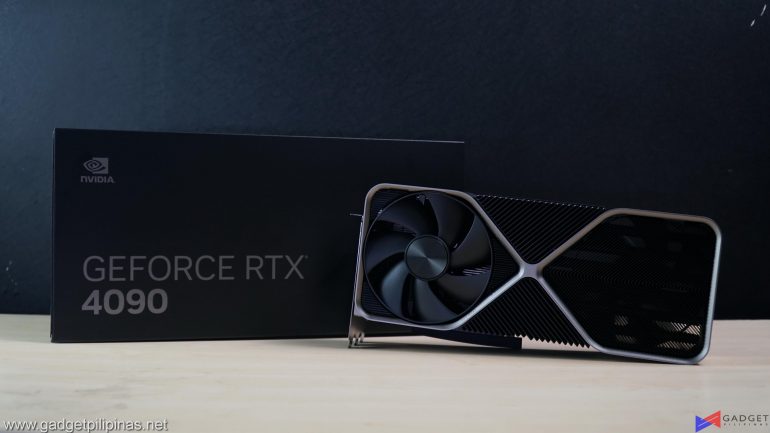Nvidia’s announcement of the RTX 40 series graphics card received mixed reactions from gamers, enthusiasts, and reviewers. Despite the controversy especially when it comes to its pricing, the Nvidia RTX 40 series sports promising new features, improvements, and efficiency. The new RTX 40 series is powered by Nvidia’s latest Ada Lovelace Architecture built under TSMC’s 4N Process. A total of three graphics cards were announced last GTC 2022 with the RTX 4090 being the flagship of the RTX 40 series. We have the Nvidia GeForce RTX 4090 Founders Edition for our RTX 4090 review.
Nvidia Ada Lovelace Architecture
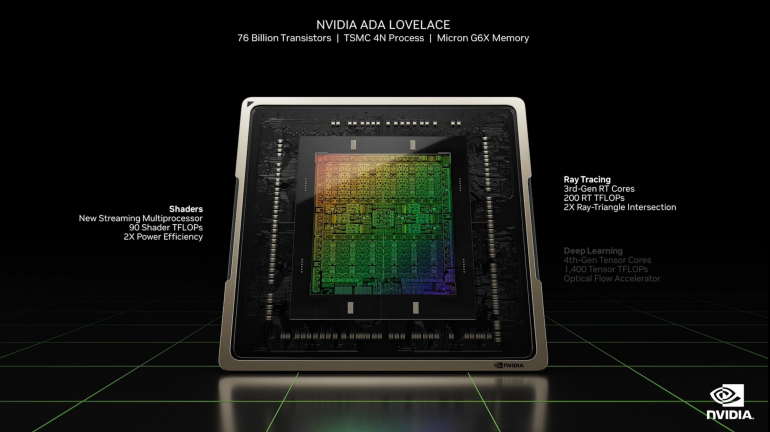
Following the success of the RTX 30 series card and the Ampere architecture, Nvidia continues to double down on its proven and tested formula with the debut of the Nvidia Ada Lovelace architecture featuring 76 Billion Transistors. Nvidia has moved from Samsung 8N to TSMC’s 4N process, resulting in much bigger performance gains and slighter higher pricing as TSMC recently hiked up its prices. The new Ada Lovelace features 3rd Generation RT Cores at 200 RT TFLOPs and 4th Gen Tensor Cores for 1,4000 TFLOPs as well as a new streaming multiprocessor with up to 2x power efficiency. Moreover, Ada Lovelace also brings in new features exclusive to the RTX 40 series graphics card such as DLSS 3, AV1 Encoding, and Shader Execution Reordering.
Shader Execution Reordering
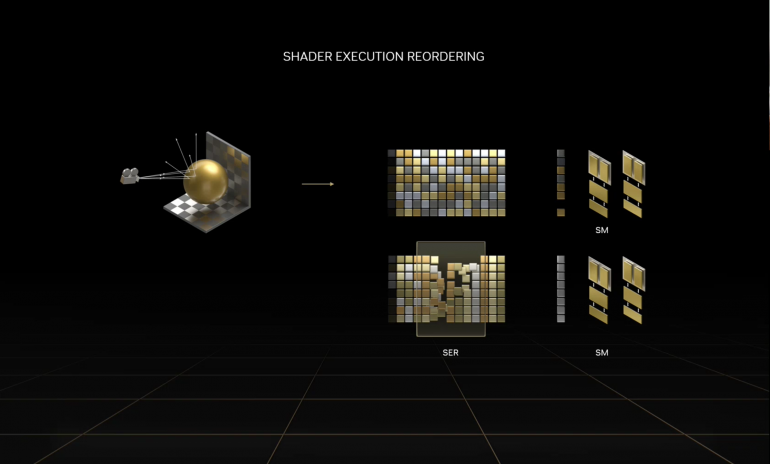
Shader Execution Reodering largely contributes to the performance gains of the RTX 40 series GPUs thanks to the more efficient usage of the shaders. SER is a scheduling system that reorders shading work on-the-fly for better execution efficiency, especially on ray-traced workloads. Think hyperthreading plus thread director but for GPUs particularly the RTX 40 series where the rays are reordered so that the ones that are running on the same program or similar are grouped together resulting in the shader working consistently instead of waiting on each other.
SER is an NVAPI extension meaning that developers would have to enable it on their games. We should expect SER to be heavily and quickly adopted especially in games where there are already Nvidia features enabled such as Reflex, RTX, and DLSS.
Nvidia DLSS 3
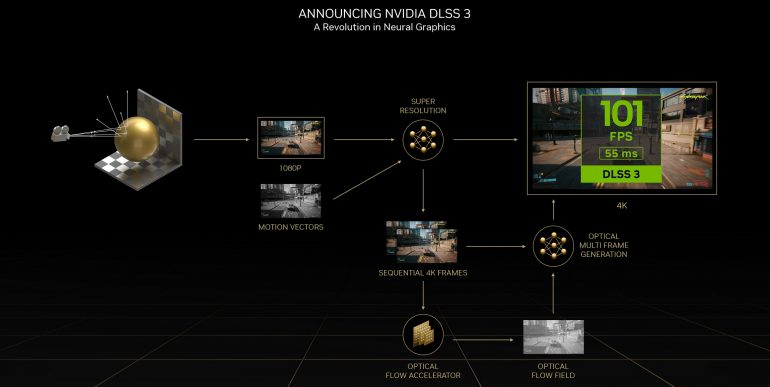
DLSS 3 uses the 4th Gen Tensor Cores and the Optical Flow Accelerator of the RTX 40 series to improve overall performance using AI-generated frames. In addition to already upscaling existing frames like DLSS 2, DLSS 3 generates intermediate frames in your game aka inserting AI-generated frames to improve performance. The RTX 40 series GPU will analyze two in-game frames and generate an optical flow field, closely looking at all elements in the game and using the information gathered to construct a frame in between. Additionally, DLSS 3 incorporates Nvidia Reflex ultra-low-latency solution making your games way more responsive in addition to providing more frames. Games that support DLSS 3 will automatically support Nvidia Reflex.
DLSS 3 can be used by older Nvidia RTX graphics card but won’t be able to fully maximize the feature as the biggest improvement of the technology, Frame Generation, is exclusive to the RTX 40 series graphics cards.
Nvidia RTX 40 Series Specifications
| RTX 40 SERIES SPECS | GeForce RTX 4090 | GeForce RTX 4080 (16GB) | GeForce RTX 4080 (12GB) |
|---|---|---|---|
| Cores | 16,384 | 9,728 | 7,680 |
| Boost Clock (GHz) | 2.52 | 2.51 | 2.61 |
| Base Clock (GHz) | 2.23 | 2.21 | 2.31 |
| Memory Config | 24GB GDDR6X | 16GB GDDR6X | 12GB GDDR6X |
| Memory Interface | 384-bit | 256-bit | 192-bit |
| Graphics Power | 450W | 320W | 285W |
| Required System power | 850W | 750W | 700W |
| Price | Php 112,300 | Php 84,200 | Php 63,200 |
Three graphics cards were announced at GTC 2022 namely the GeForce RTX 4090 and two variants of the RTX 4080, a 16GB and 12GB variant similar to the current RTX 3080 that has a 10GB and 12GB version. The RTX 4090 is the brand’s flagship graphics card however the 4090 isn’t the maxed out version of the AD 102 GPU so we’re expecting an RTX 4090 Ti in the future, should Nvidia see the need to release one. Going back to the RTX 4090 and 3090 Ti, the 4090 is only $100 more than the launch price of the latter and is considerably cheap when you take into account the performance gains, inflation and global economic recession that we’re in.
Nvidia RTX 4090
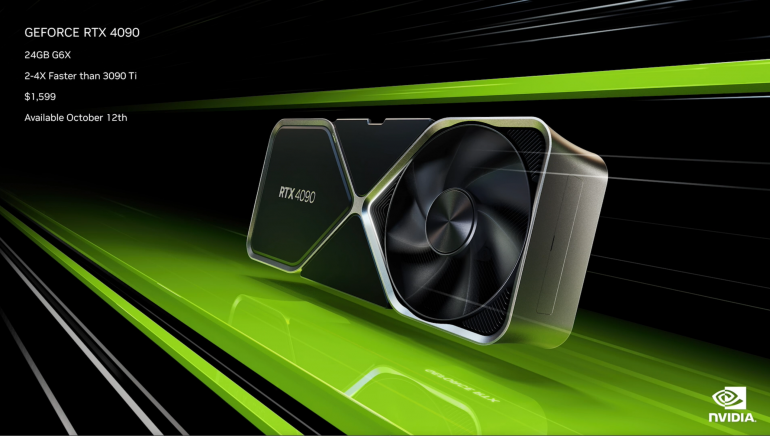
The RTX 4090 has 52% more CUDA cores than the outgoing RTX 3090 Ti with similar percentage increase in RT cores and Tensor cores. At the announcement, Nvidia claimed performance gains of around 2-4x faster than the RTX 3090 Ti with a launch price premium of $100. In the announcement, Nvidia showed rasterezation performance graphs aka non-ray-traced titles but subsequent graphs showed Ray Tracing and DLSS enabled to get the four times performance improvement. Nonetheless, it’s still an improvement
Nvidia GeForce RTX 4090 Founders Edition Unboxing and Overview
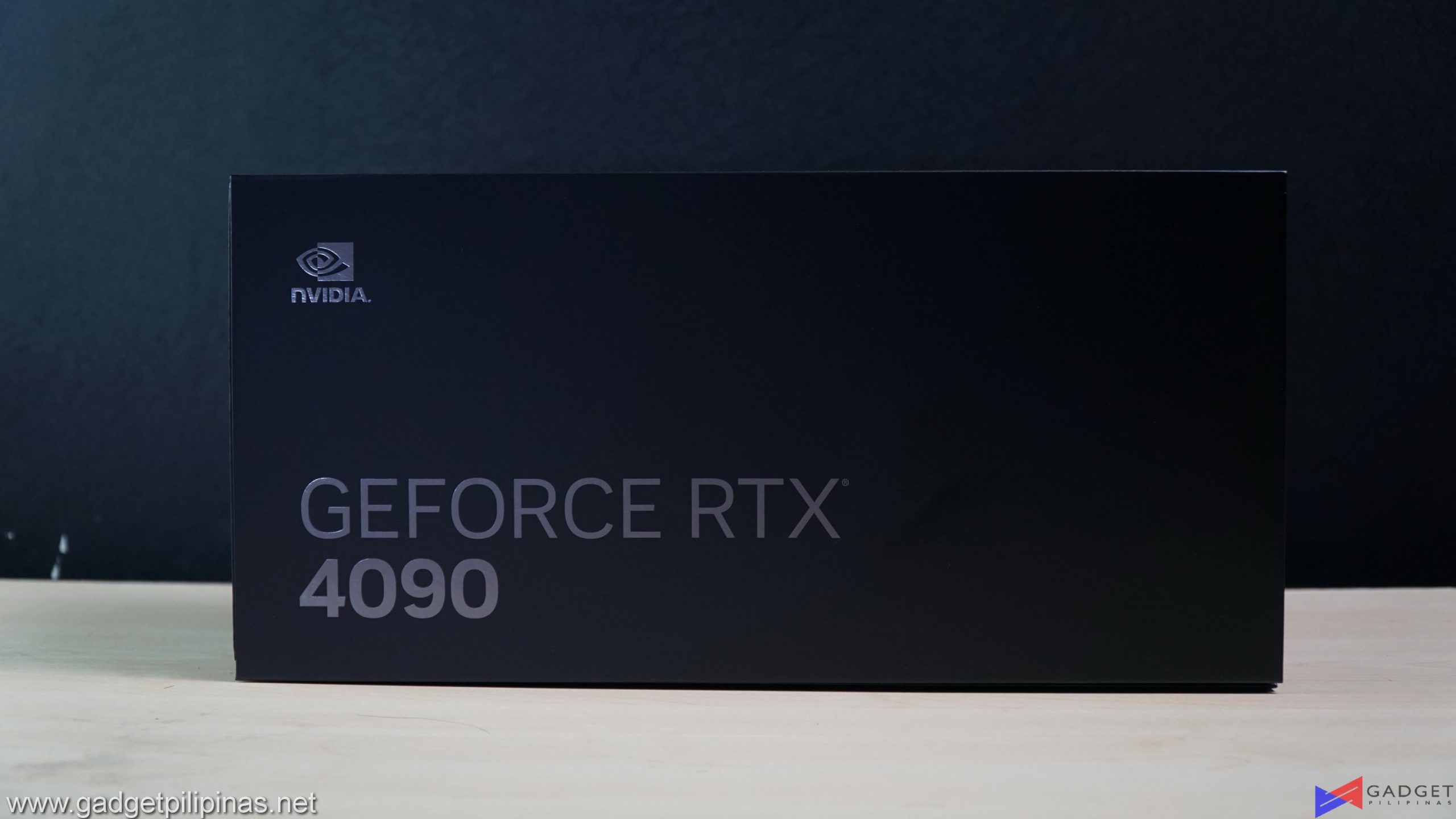
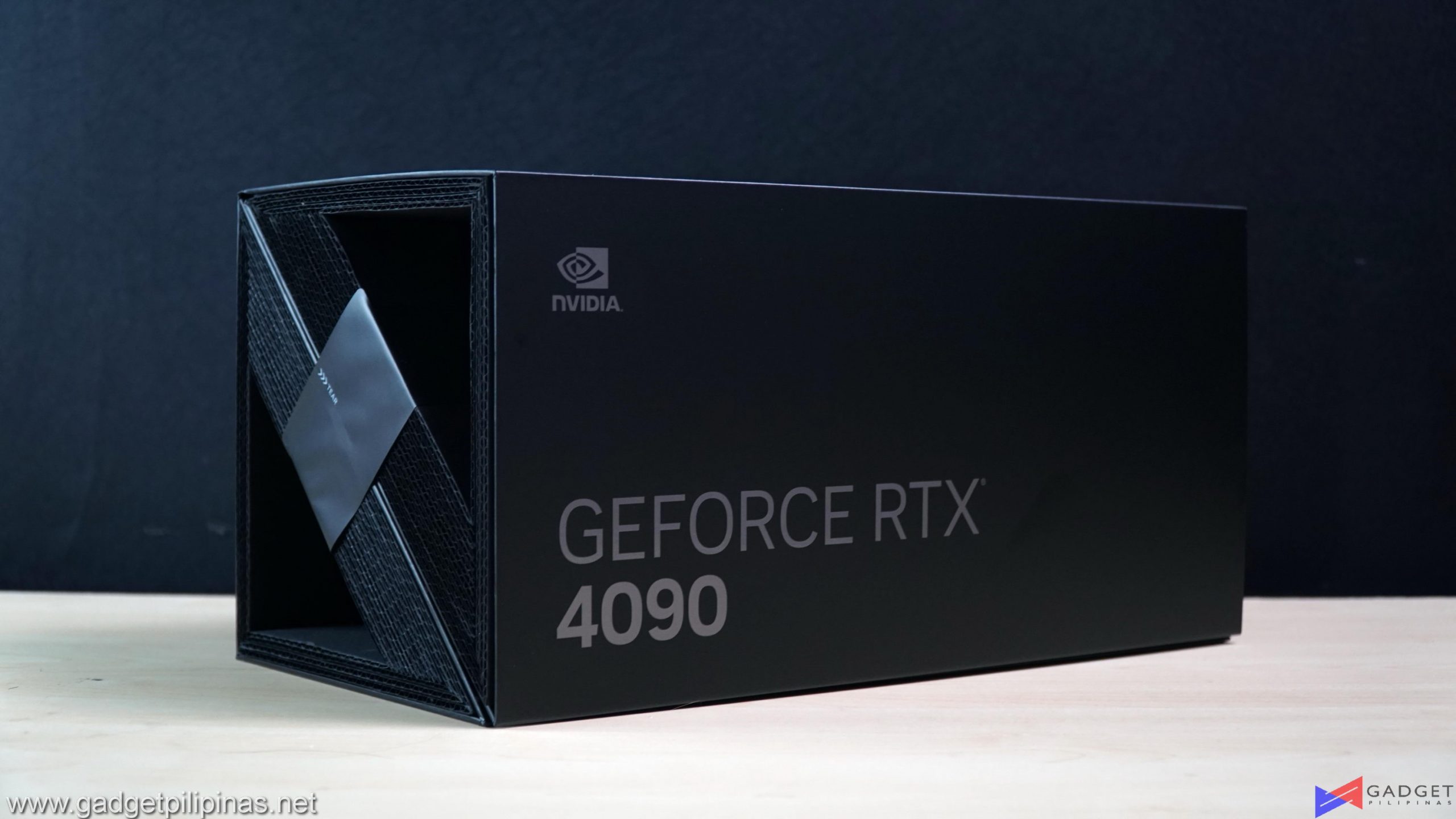
Nvidia has redesigned its founders edition packaging to accommodate for the RTX 4090 FE’s large footprint. The packaging uses the new GeForce font which is frankly not that appealing compared to the ones found on previous generations. Font aside, the packaging looks more premium with little to no markings except for the Nvidia logo and GeForce RTX 4090 product name in a bronze shade.
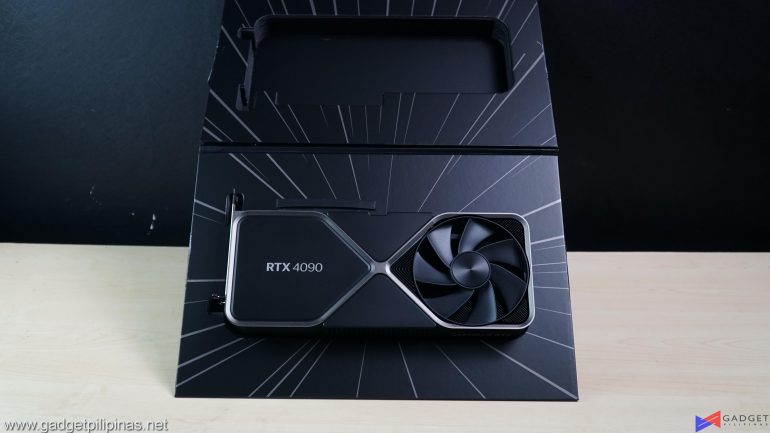
Nvidia never fails to give a premium unboxing experience and the RTX 4090 FE is no exception as the moment you open the box you are immediately greeted with the GPU itself with a hyperspace style background to highlight the card.
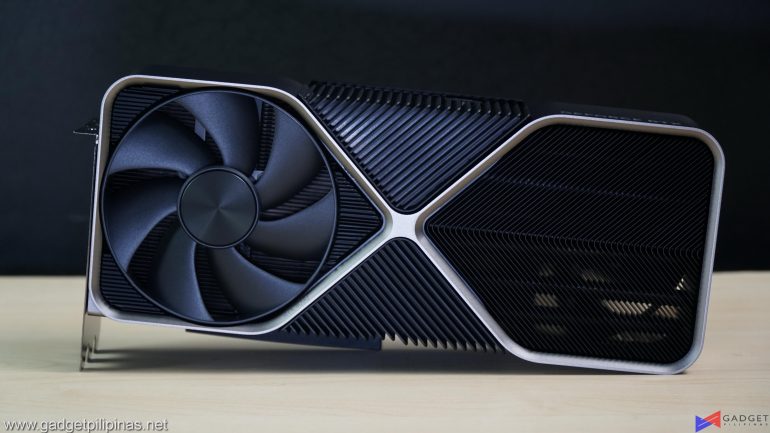
Nvidia decided to stick to the signature hourglass dual-axial flowthrough design for the RTX 4090 FE and even the upcoming RTX 4080 16GB Founders Edition card. While they may look very similar to the previous RTX 30 founders edition cards, Nvidia claims to have optimized the heatsink, heat pipes, and fans for better airflow and temperatures achieving as much as 15% more airflow than the RTX 3090 at the same acoustic level.
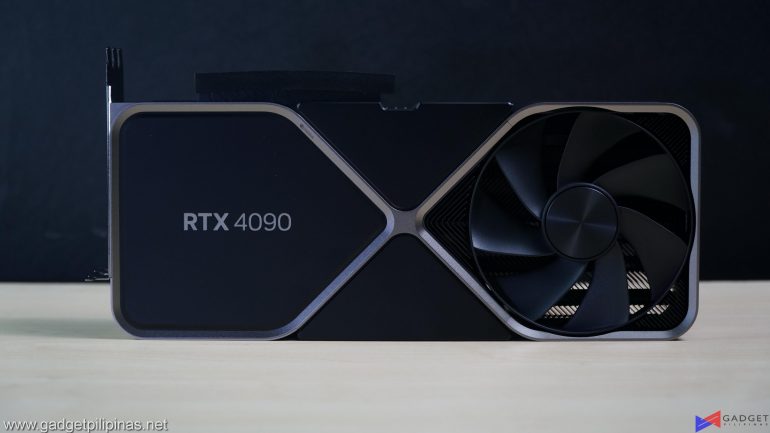
The Nvidia GeForce RTX 4090 Founders Edition is the brand’s largest FE card yet measuring 304 mm x 137 mm x 61 mm. The Founders Edition has a thickness of 3.5 slots but is definitely longer than the width of an E-ATX motherboard.
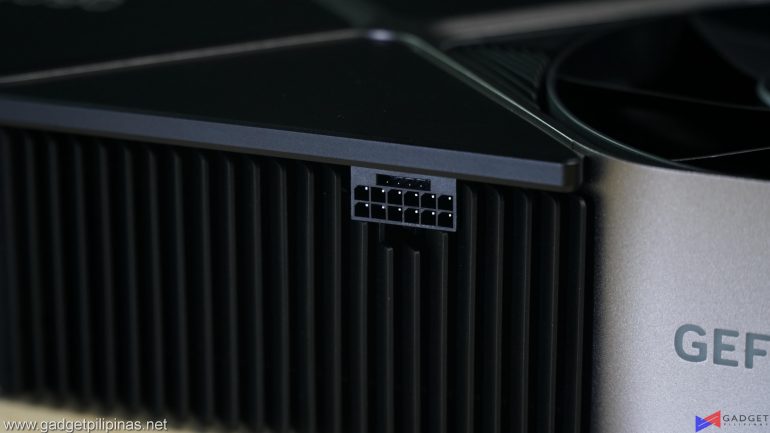
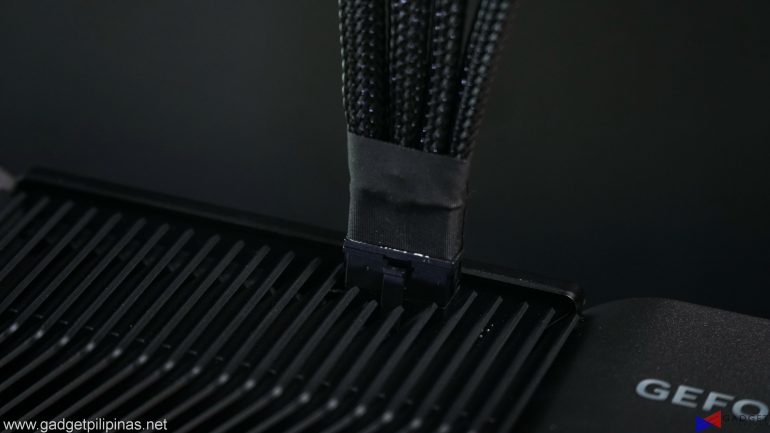
With good performance and improvements require a certain amount of power and that is where the new ATX 3 PCI-E Gen 5 standard steps in. The RTX 40 series graphics cards use the new 12-pin connector with microsense pins. The RTX 4090 has a rated TGP of 450W, and while some may complain that it’s a power-hungry card, it actually has the same TGP as the RTX 3090 Ti. An 850-watt PSU is the minimum requirement for the RTX 490 however board partners especially OC edition models will require higher than 850W.
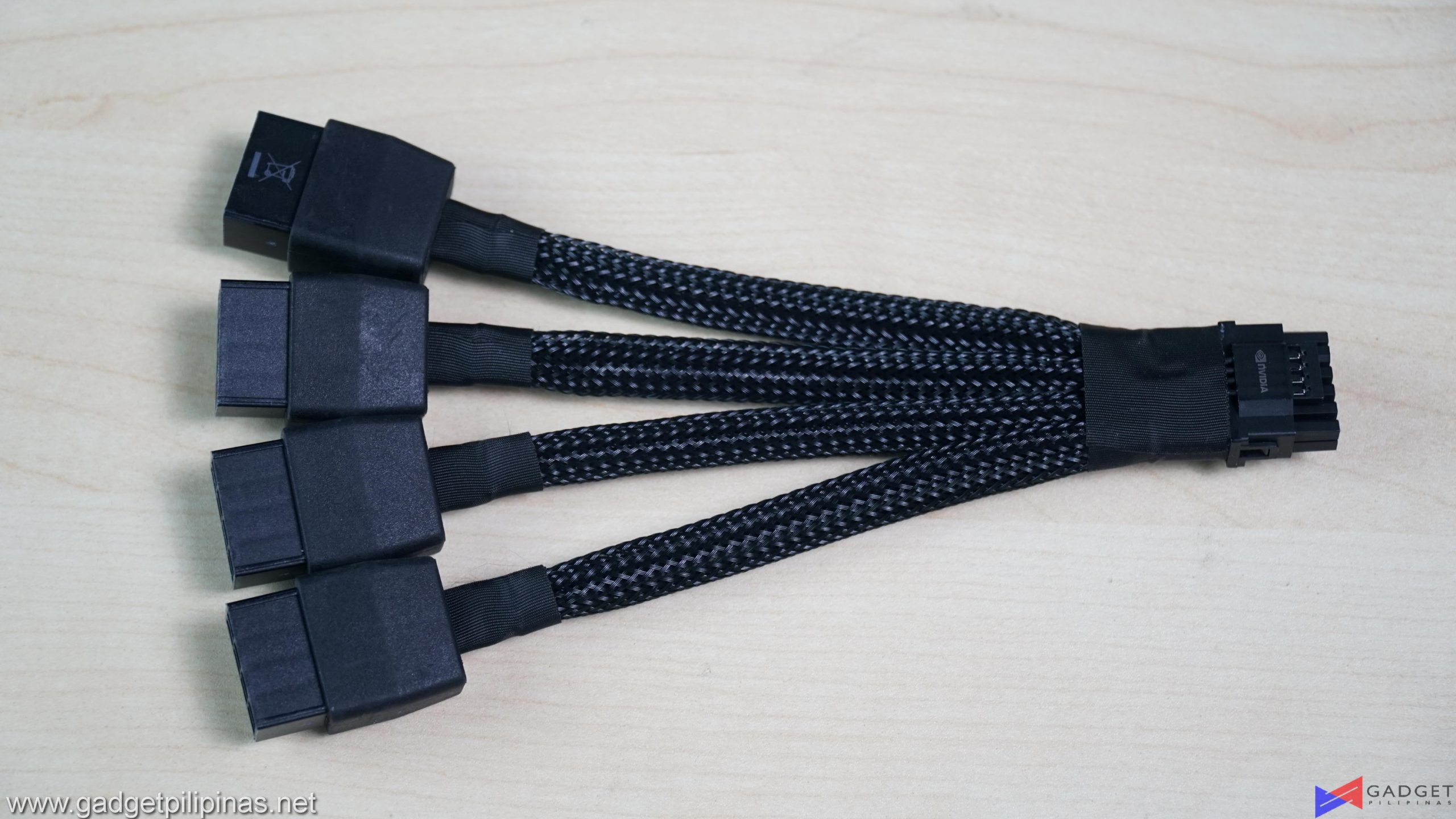

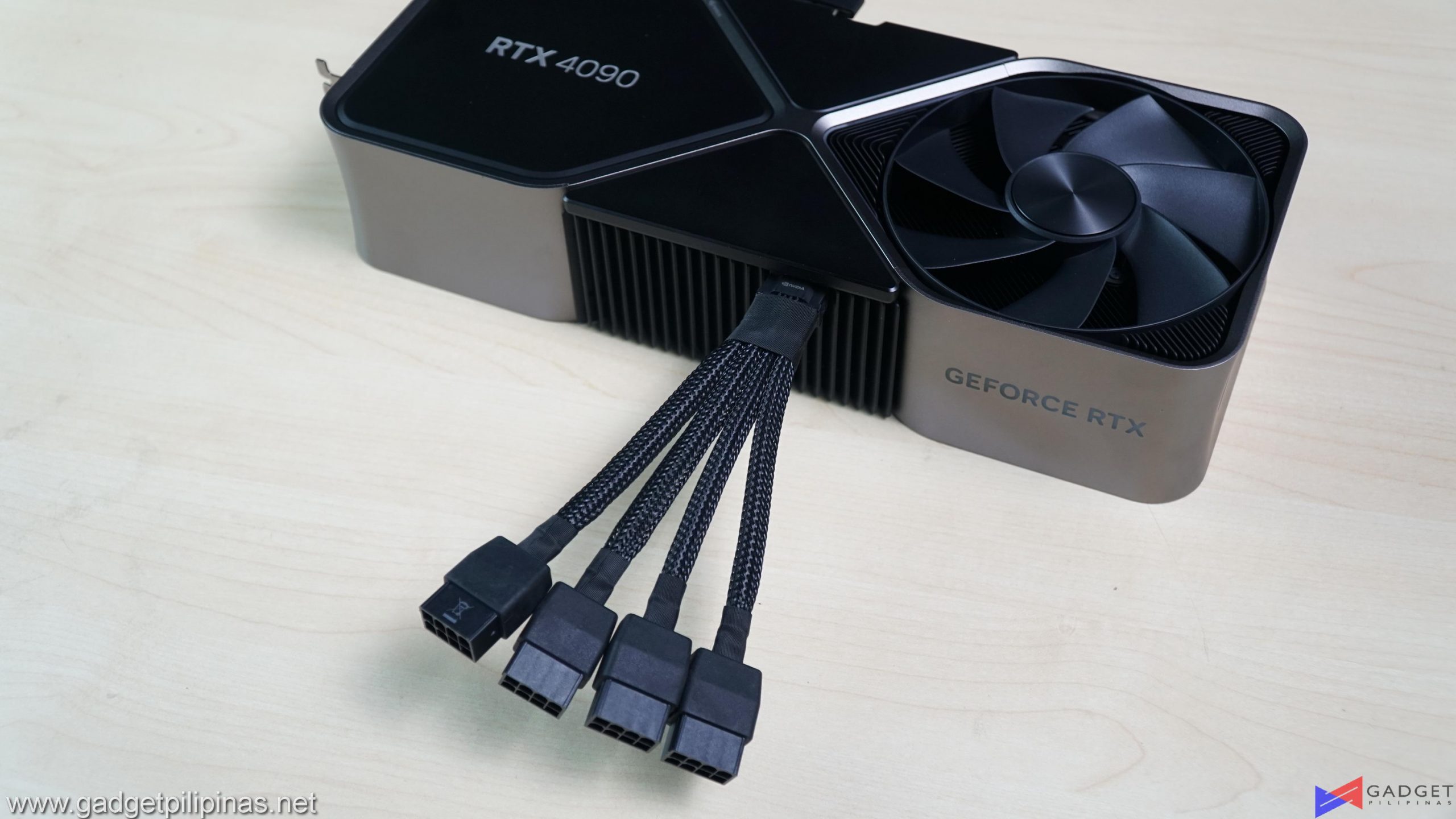
While Nvidia requires only three 8-pin connectors for its adapter, an extra 8-pin connector is for optional overclocking with up to 33% more power. The included adapter is very sturdy especially on the 12-pin end with minimal flex on its side. Due to this design, Nvidia recommends an additional 36 mm of side clearance of your chassis should you use the adapter instead of a direct ATX 3 PSU.
If you’re concerned over the rumored power consumption behavior, meltdown, warnings, hazards, and compatibility with the new connector, Nvidia has published a general FAQ of the RTX 40 series power specifications. That said, We’ve parsed through the linked article and we’re confident with Nvidia’s claims, and our time testing the RTX 4090 FE didn’t show any out-of-place behavior as opposed to the rumors circulating the community.
Test Bench Setup and Benchmark Methodology
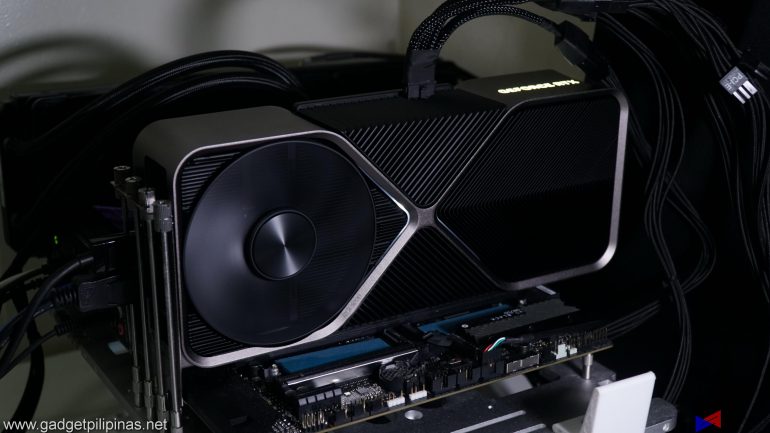
Gadget Pilipinas’ testing philosophy is to provide detail-oriented results as accurately as possible so that our readers can replicate our tests given that these conditions are met. Different benchmarking apps and sequences are used depending on the component or device being tested.
AMD Ryzen 9 7950X Testbench Specs
| CPU | AMD Ryzen 9 7950X |
| COOLER | ASUS ROG RYUJIN II 360mm V2 – Noctua NT-H2 Thermal Paste |
| MOTHERBOARD | ASUS ROG Crosshair X670E Hero |
| MEMORY | GSkill Trident Z5 Neo 32GB(2x16GB) 6000 Mhz DDR5 |
| GPU | Nvidia RTX 4090 FE | Inno3D RTX 3080 Ti iChill X4 | 521.90 driver |
| STORAGE | Kingston KC3000 1TB PCI-E Gen 4 SSD |
| POWERSUPPLY | ROG Thor 1000W Platinum II PSU |
| OPERATING SYSTEM | Windows 11 Pro Build 22H2 |
| DISPLAY | Lenovo Legion Y27Q Gaming Monitor |
We use CapFrameX 1.7.0 Beta as our primary FPS capture and analysis tool for all our gaming benchmarks. The latest build version of Windows 11 Pro, and WHQL-certified drivers are used for our benchmarks. Readings such as temperatures and power draw are recorded using HWINFO64, and other relevant software for cross-checking.
Nvidia RTX 4090 Founders Edition Benchmarks
COUNTER-STRIKE: GLOBAL OFFENSIVE
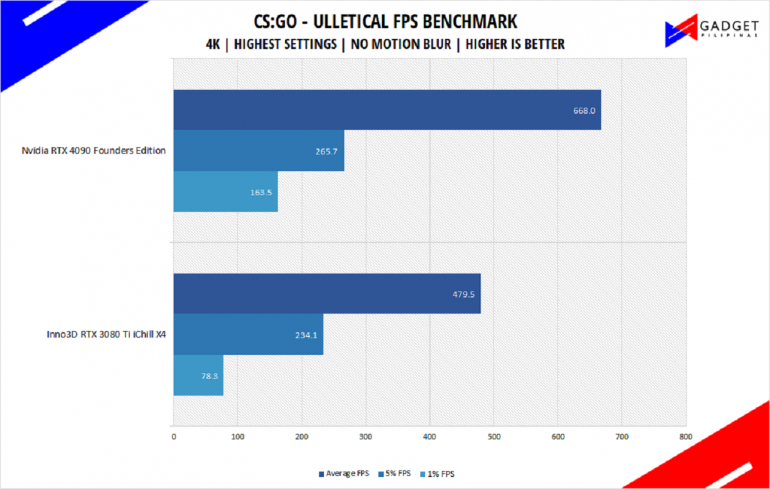
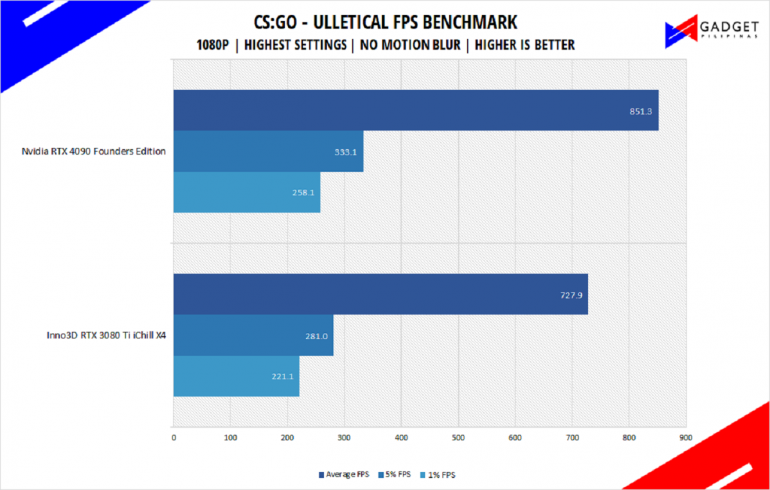
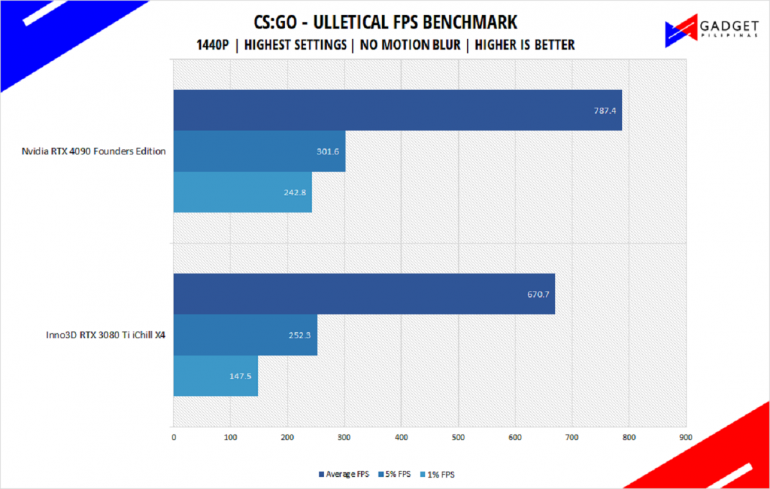
Counter Strike: Global Offensive aka CSGO is an 11-year-old first-person shooter title that’s still widely popular despite its old Source Engine. CS:GO is a great game to test out CPU performance as the game is heavily CPU-dependent like any other FPS title. Our CS:GO benchmark process uses ULLETICAL’s FPS Benchmark workshop mod to measure the hardware’s performance.
DOTA 2
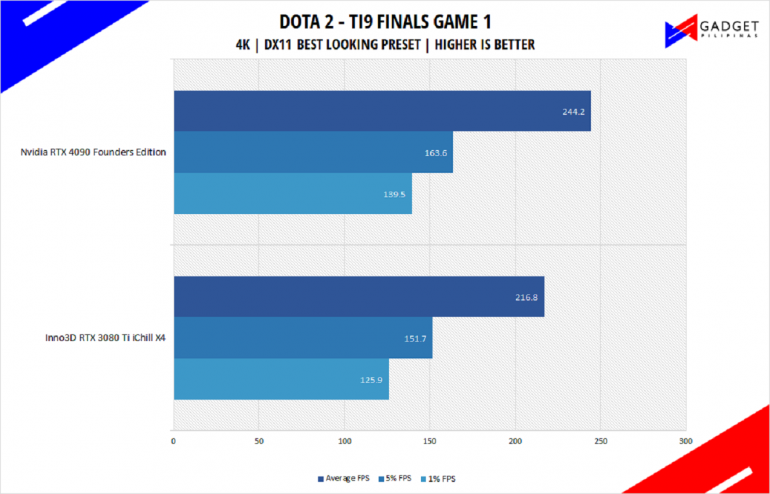
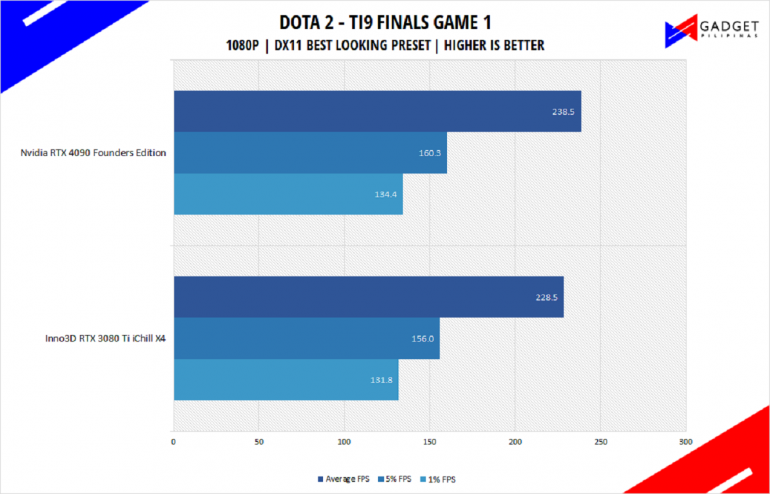
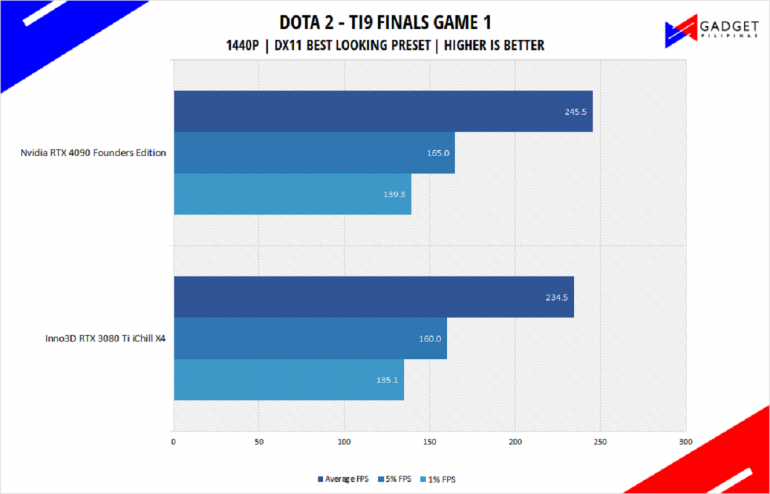
Most gamers play at least one of the following free-to-play titles: League of Legends, CS: GO, Dota 2, and/or Fortnite. Dota 2 is a good representation of the F2P titles as it is the most demanding game in the spectrum. The benchmark will give you an idea of the graphic card’s relative performance on other lesser demanding titles. Our benchmark sequence is based on a replay of OG vs. Liquid in the TI9 grand finals from the team fight that happened from 28:30 to 29:30.
Far Cry 5 & Far Cry 6
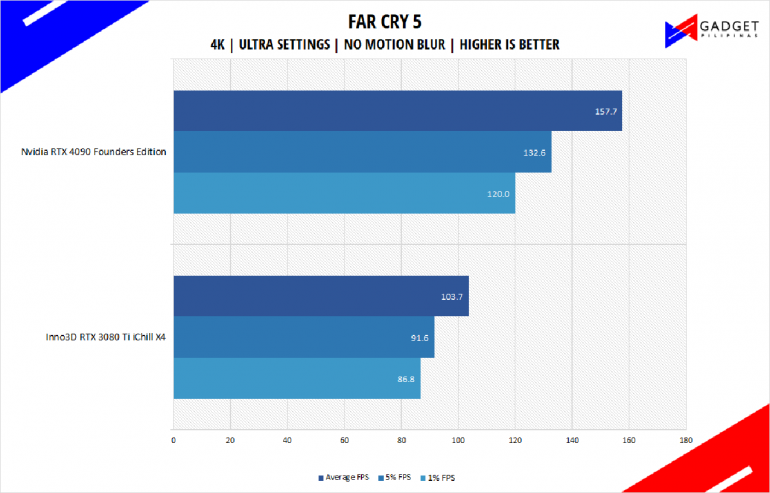
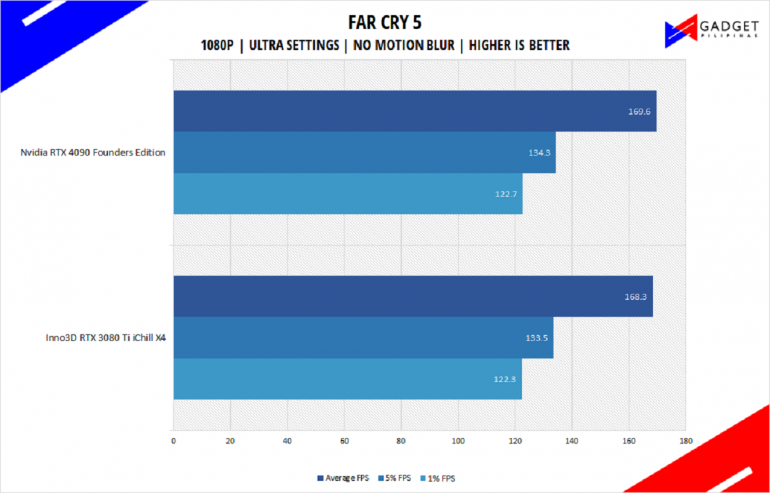
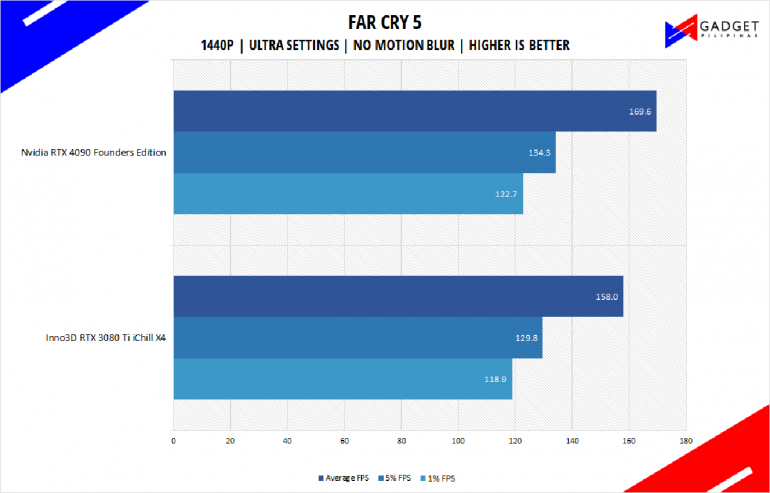
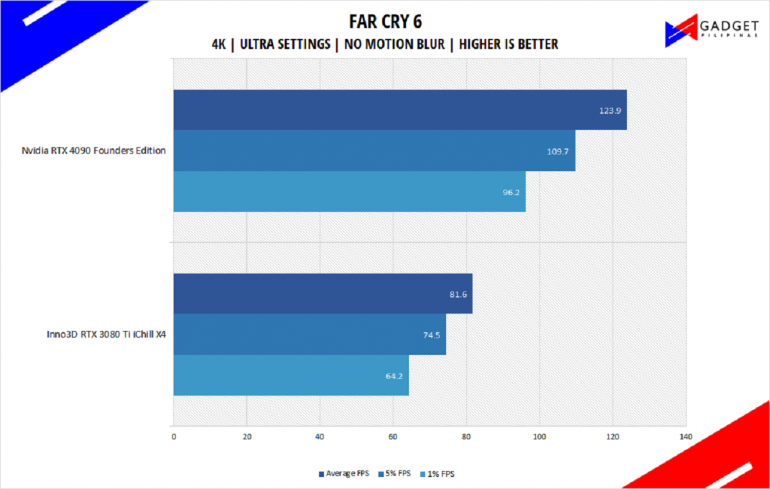
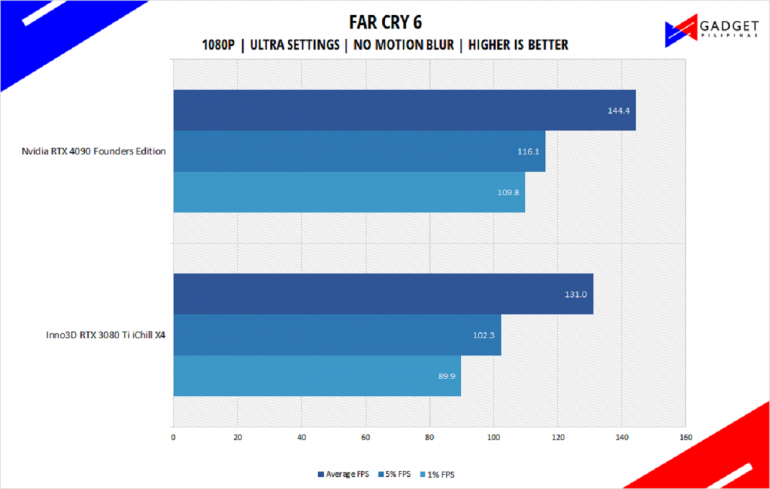
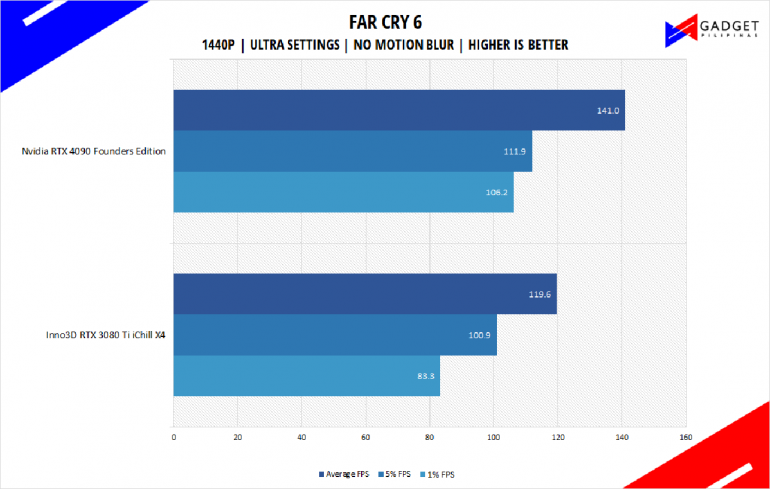
FarCry 5 is an FPS game published by Ubisoft and uses the Dunia engine. It heavily relies on and takes advantage of DirectX 11 to render a realistic environment that makes it taxing to both the CPU and GPU. Far Cry 6 is the latest installment in the franchise which utilizes DirectX 12 to run the virtual world of Yara.
Rainbow Six Siege
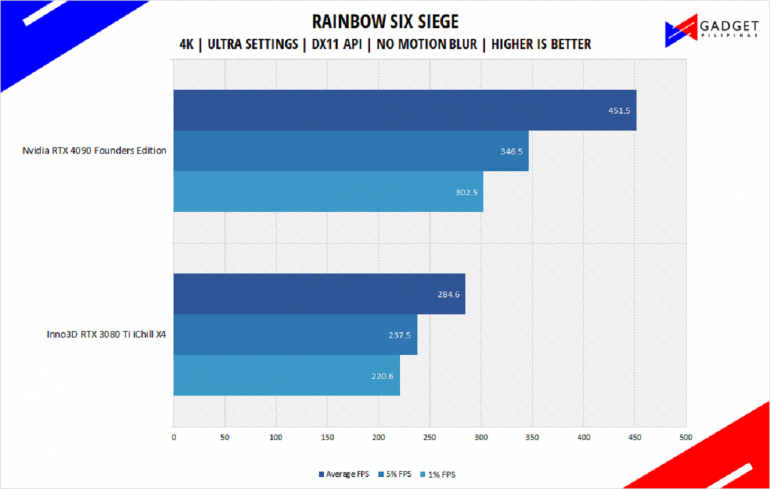
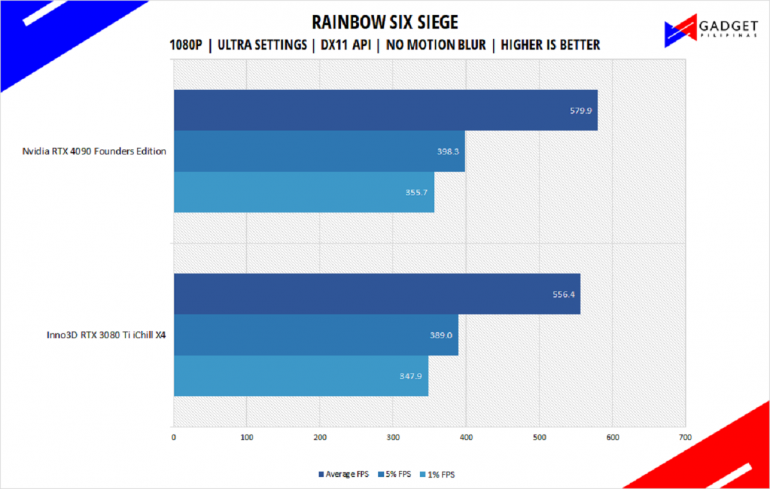
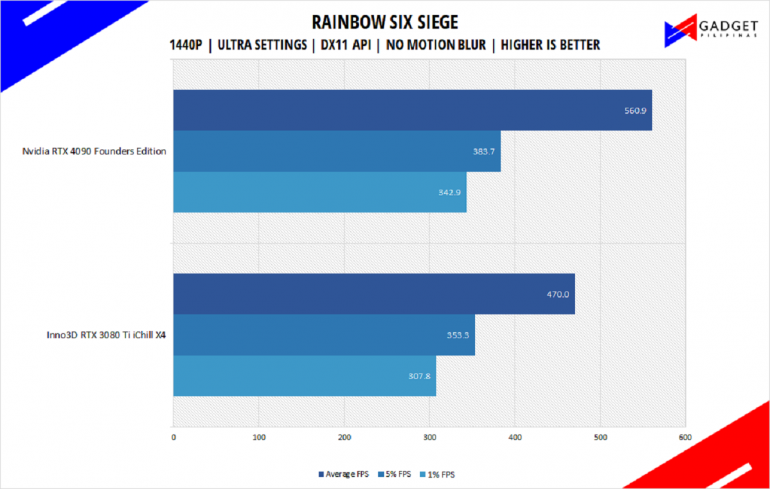
Rainbow Six Seige is one of the few popular AAA games that’s still popular in 2021 due to its competitive gameplay mechanics. R6S uses the AnvilNext game engine, which the game’s publisher, Ubisoft, developed. As of writing, Rainbow Six Siege is currently the most popular Tom Clancy title beating out Wildlands, Breakpoint, and even Division 2.
Cyberpunk 2077
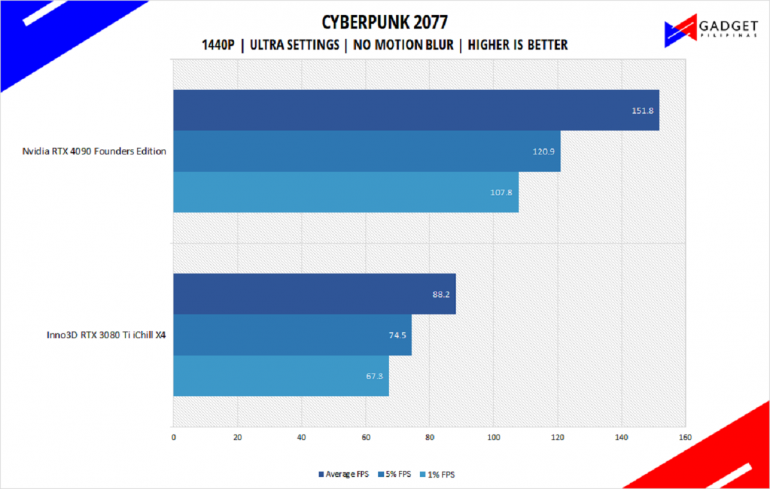
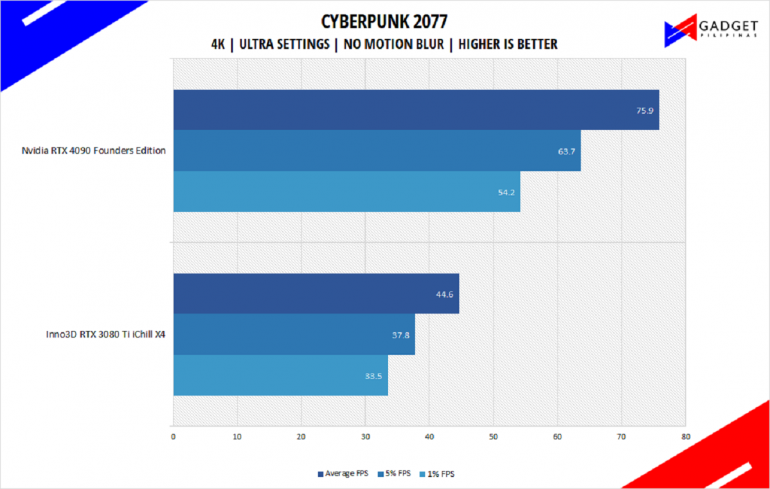
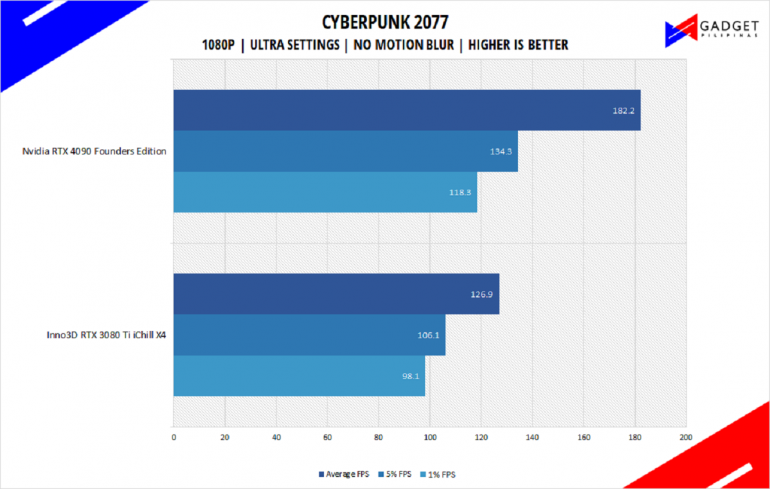
Cyberpunk 2077 is arguably the most hyped game of 2020. Developed by CD Projekt Red, the dystopian open-world, action-adventure RPG sports is one of the most demanding titles to date. Cyberpunk 2077 also supports three Ray Tracing settings as well as DLSS which makes the game a great tool to measure Ray tracing performance for both AMD and Nvidia graphics cards.
Shadow of The Tomb Raider
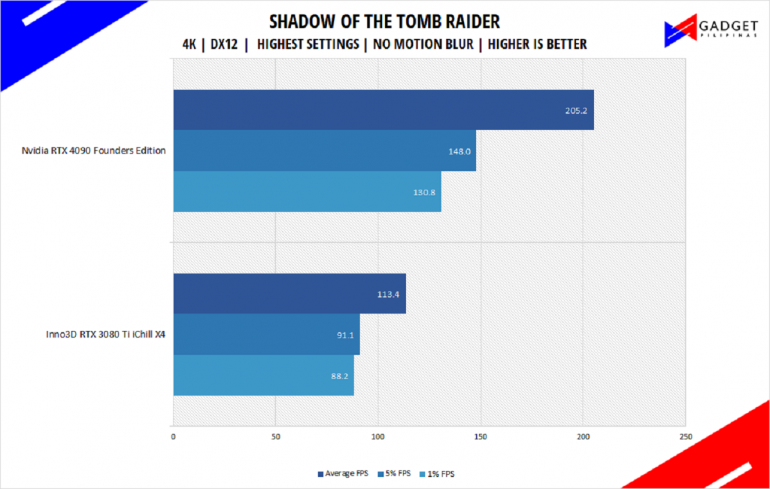
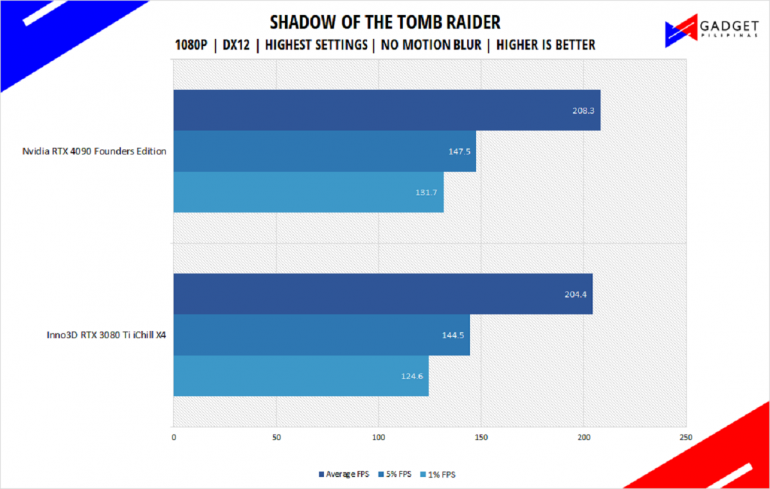
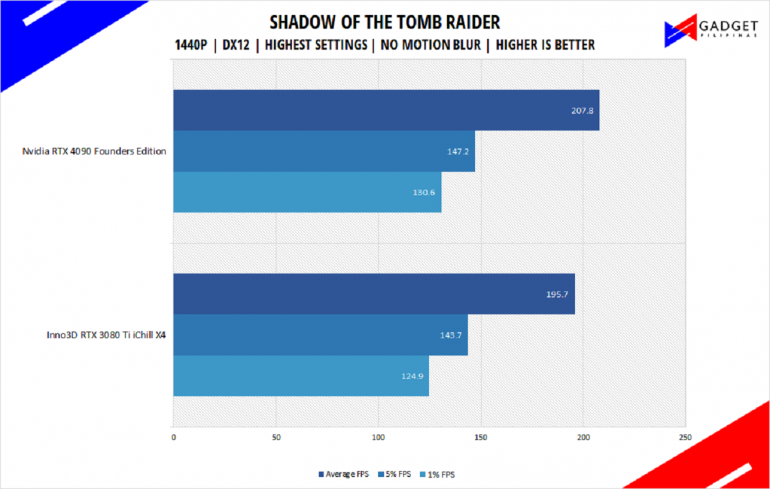
Shadow of The Tomb Raider or SOTR is the latest installment of the Lara Croft Tomb Raider franchise. Developed by Square Enix, SOTR uses the Foundation engine and is further enhanced by Eidos Montreal. SOTR is also one of the first games to come out with Ray Tracing and DLSS support.
Metro Exodus
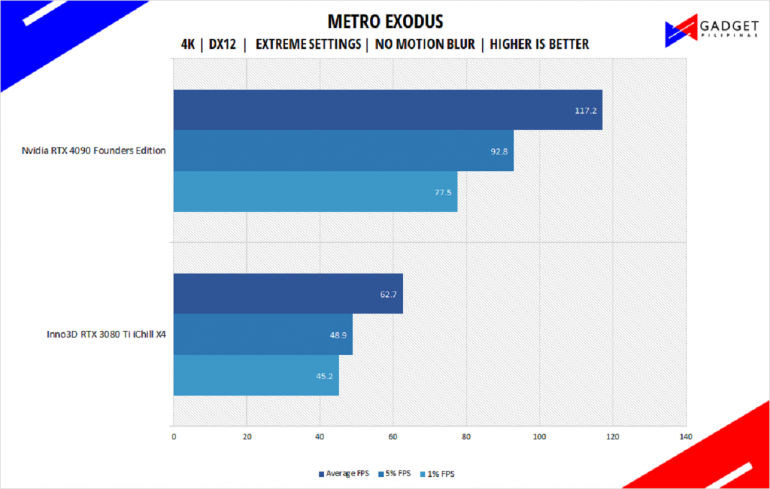
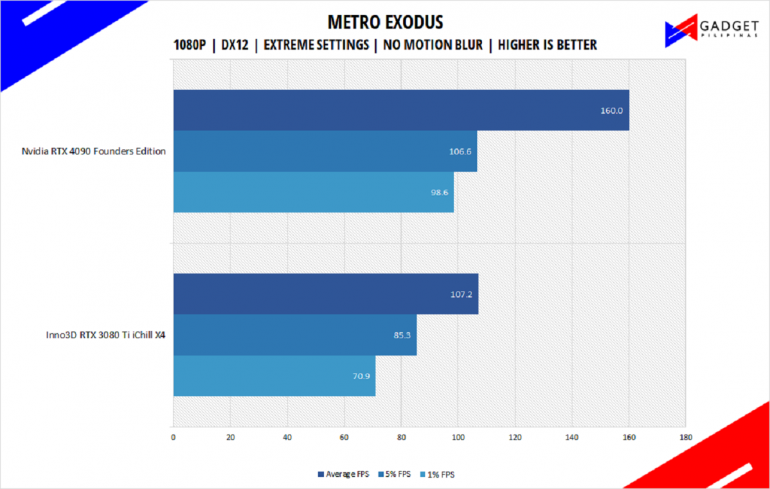
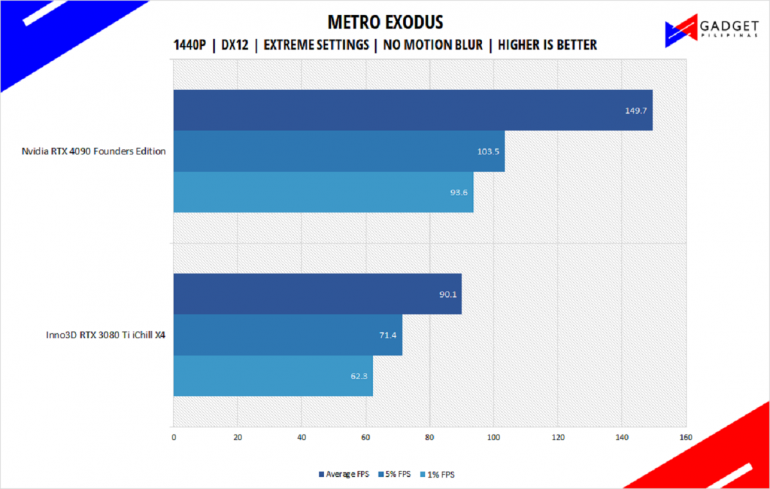
Metro Exodus is the third Metro game trilogy based on Dmitry Glukhovsky’s novels. The game is a first-person shooter with survival horror and stealth elements. The post-apocalyptic game uses 4A Engine by 4A games. Released last 2019, Metro Exodus remains to be one of the most graphically pleasing and demanding games that’s popular to date.
Assassin’s Creed: Odyssey and Valhalla
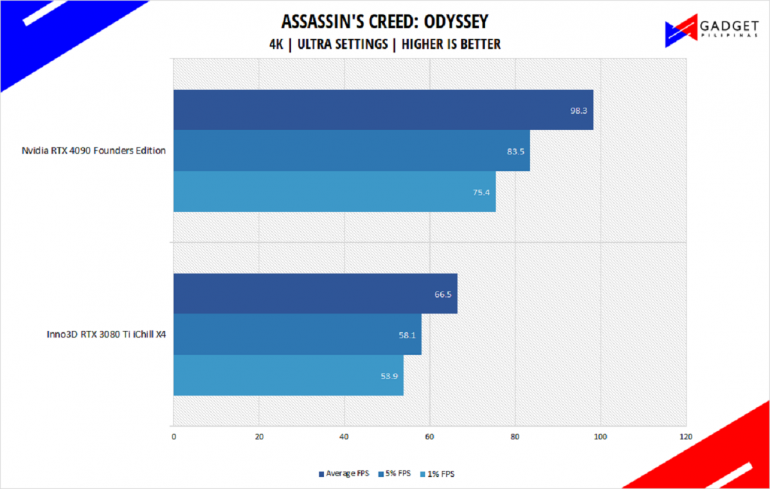
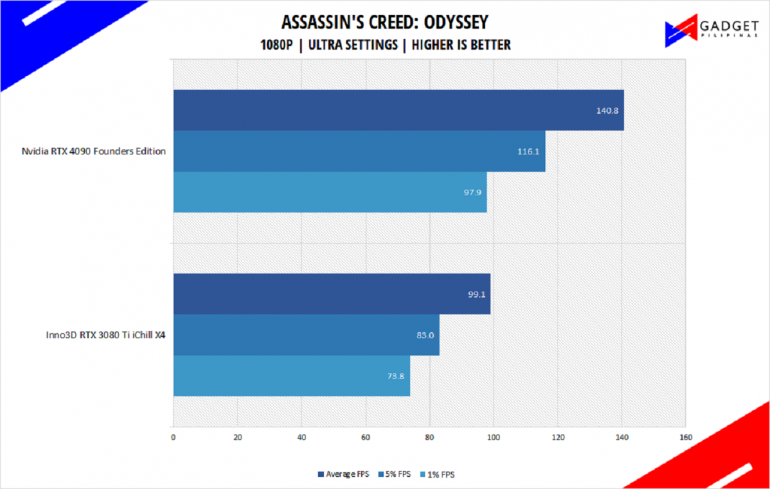
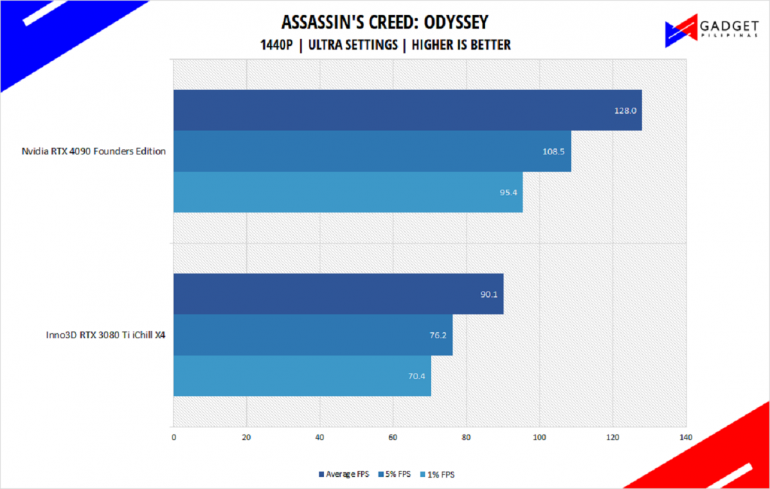
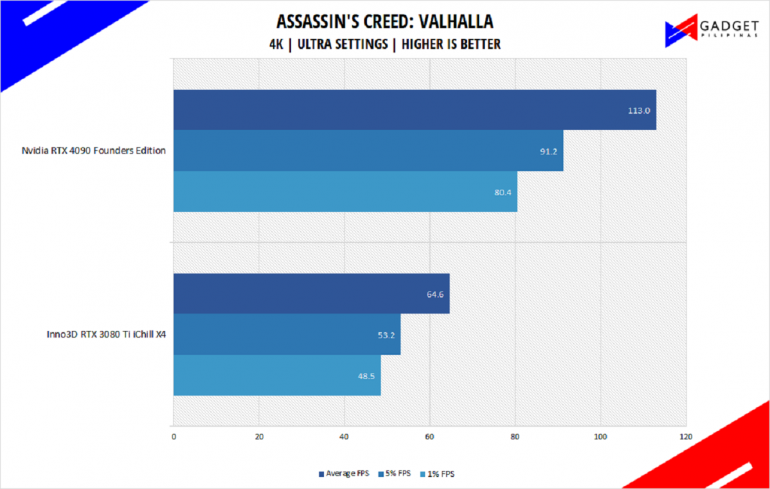
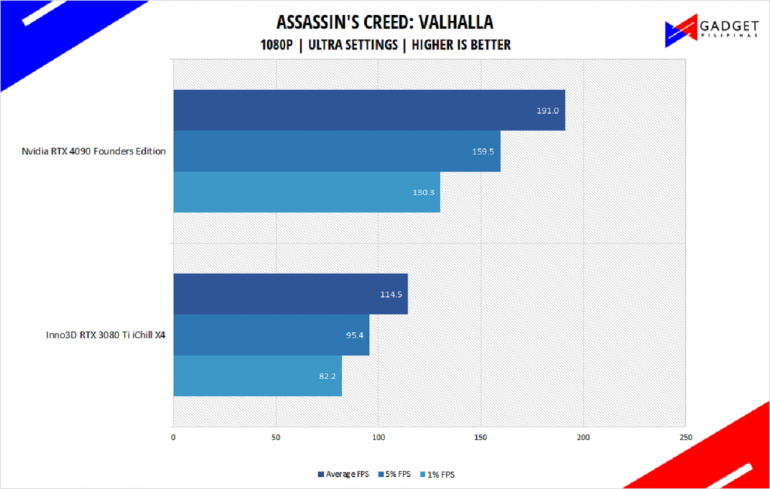
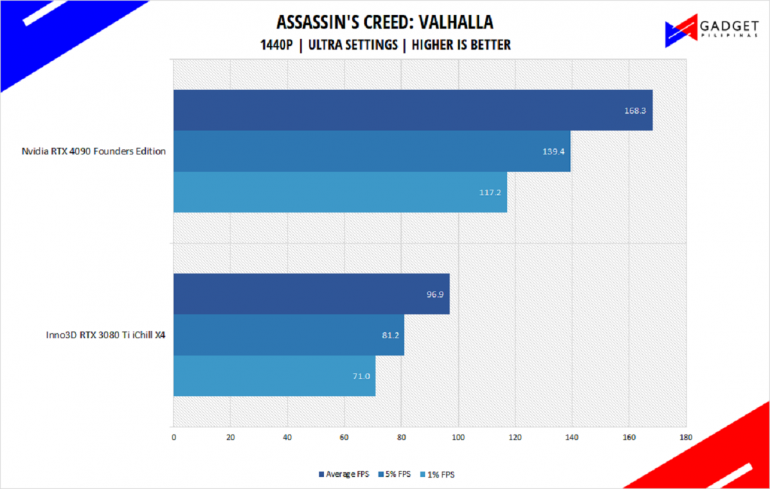
Assassin’s Creed Odyssey is the latest franchise installment from Ubisoft. It’s by far the most popular and stable Assassin’s Creed title since AC IV: Black Flag. It uses the AnvilNext 2.0 game engine, an updated version of Rainbow Six Siege’s game engine, and uses the DirectX 12 API.
F1 2020 and F1 22
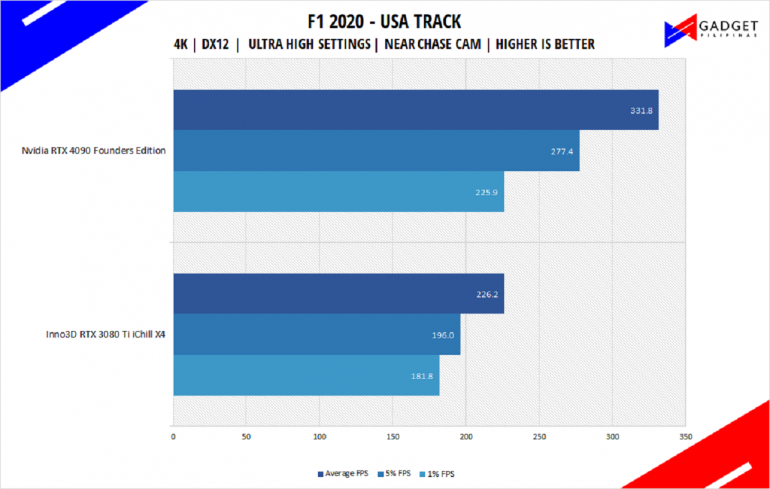
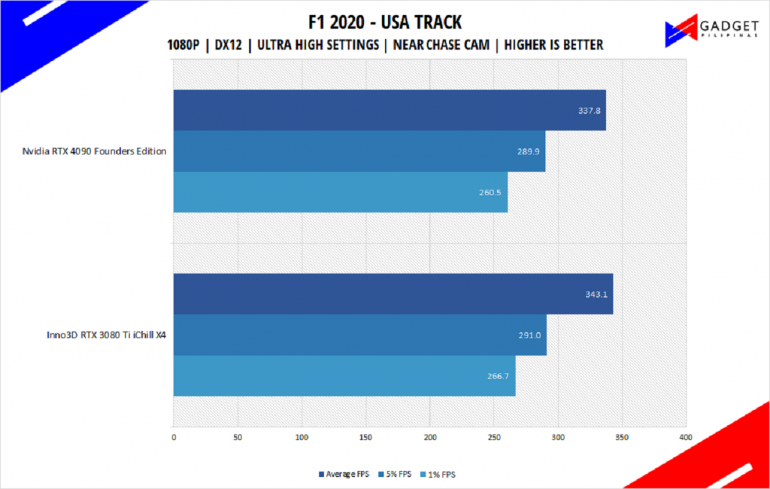
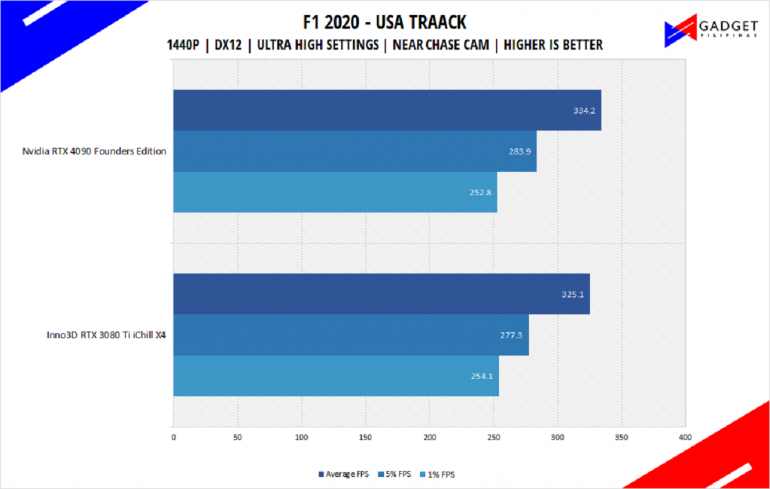
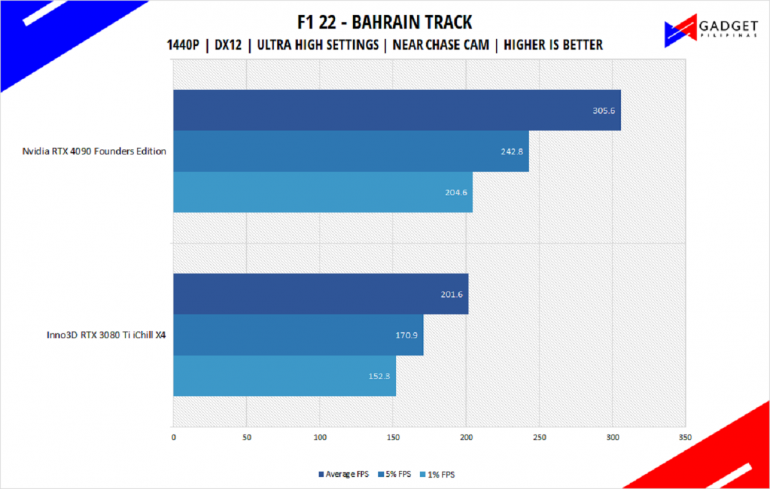
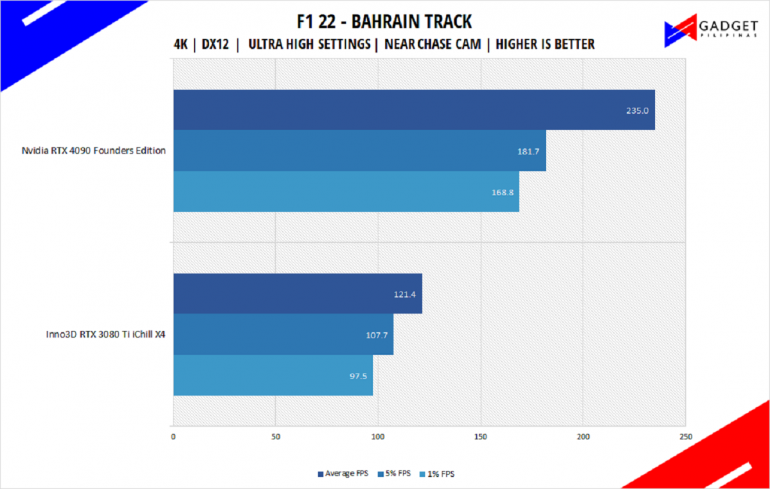
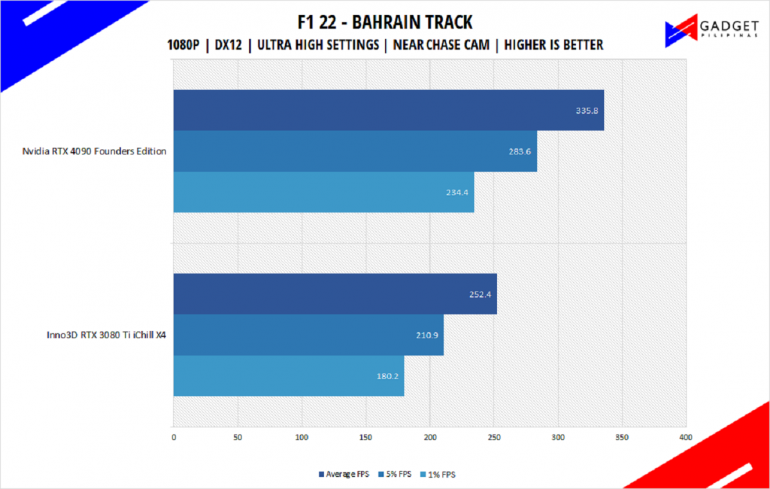
F1 2020 is the official video game of the 2020 Formula 1 and Formula 2 championships developed by Codemasters. F1 2020 is the twelfth installment in the franchise and uses the Ego Engine 3.0. F1 2020 is a good representation of racing games thanks to its realistic graphics and fairly demanding spec requirements.
HORIZON ZERO DAWN
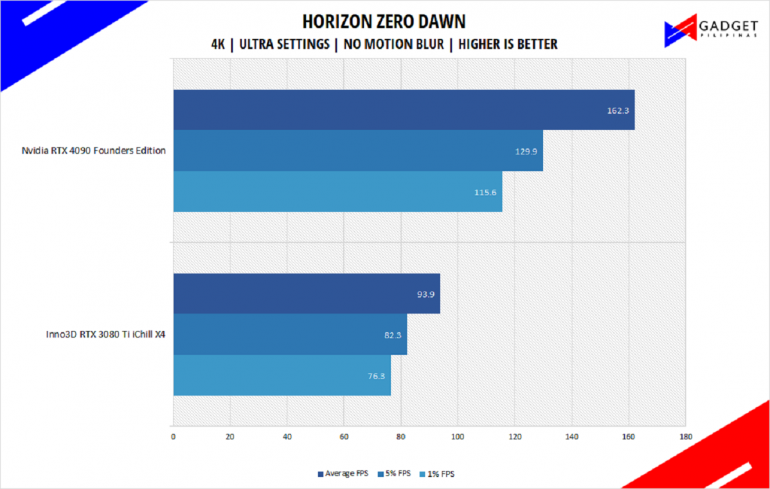
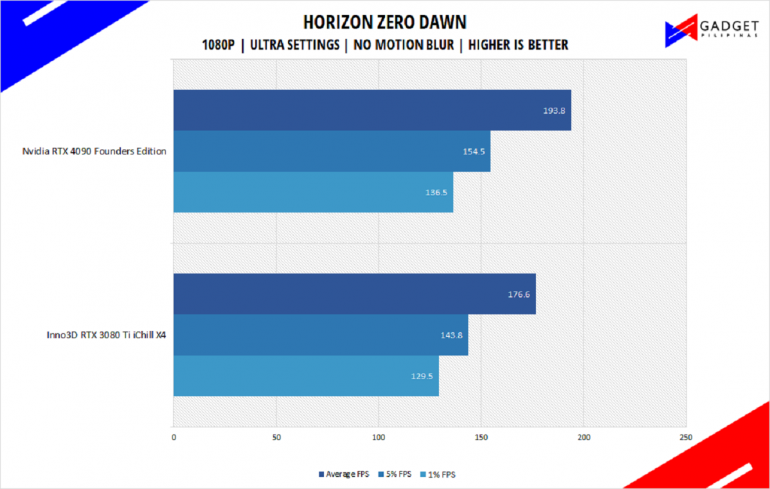
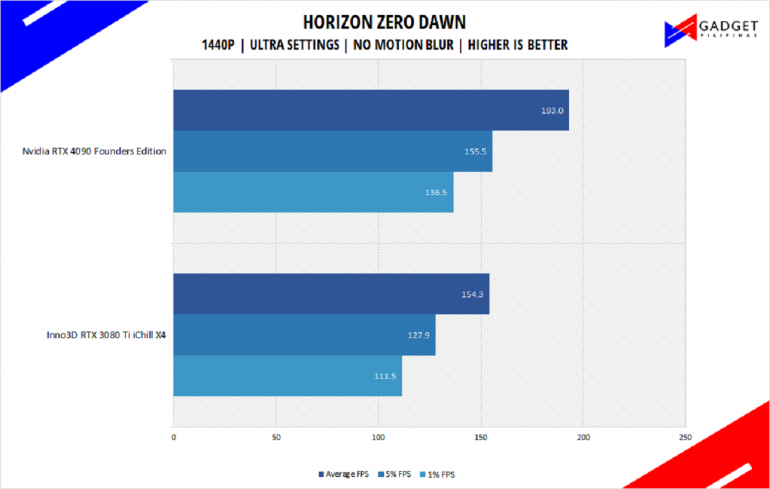
Horizon Zero Dawn is one of the most popular console-port RPG developed by Guerilla Games and published by Sony Interactive Entertainment. Horizon Zero Dawn is a multi-award-winning action RPG, and its popularity resulted in an exclusive Complete Edition game bundle in Steam.
Nvidia RTX 4090 Founders Edition Ray Tracing and DLSS Benchmarks
Cyberpunk 2077
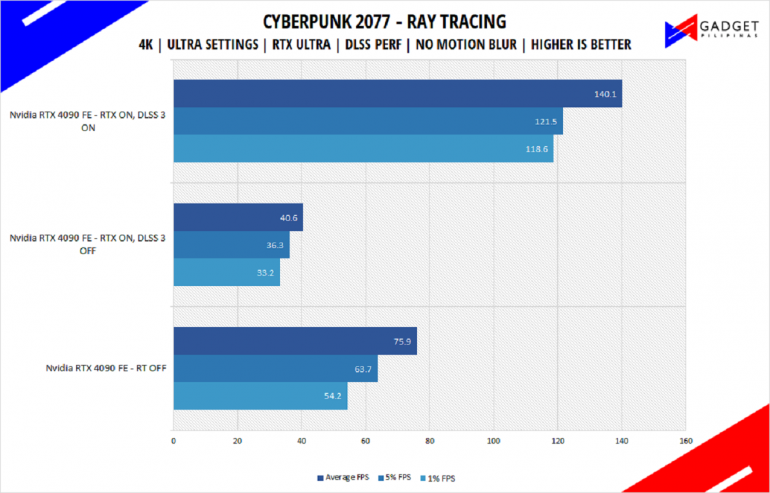
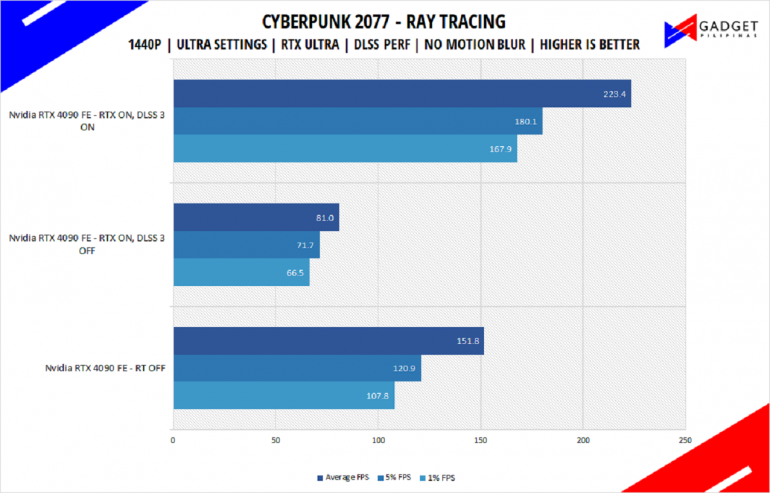
F1 22
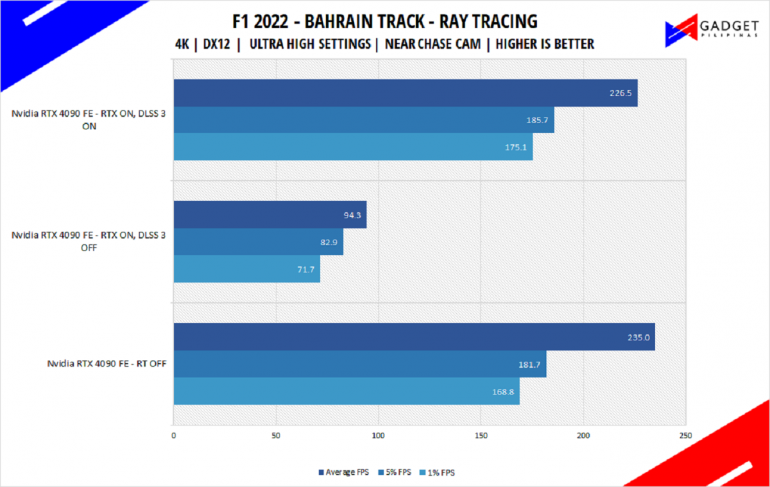
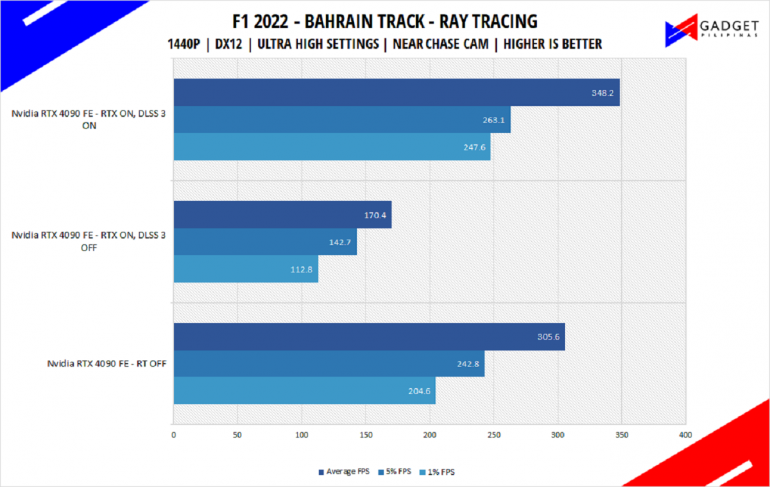
Shadow of the Tomb Raider
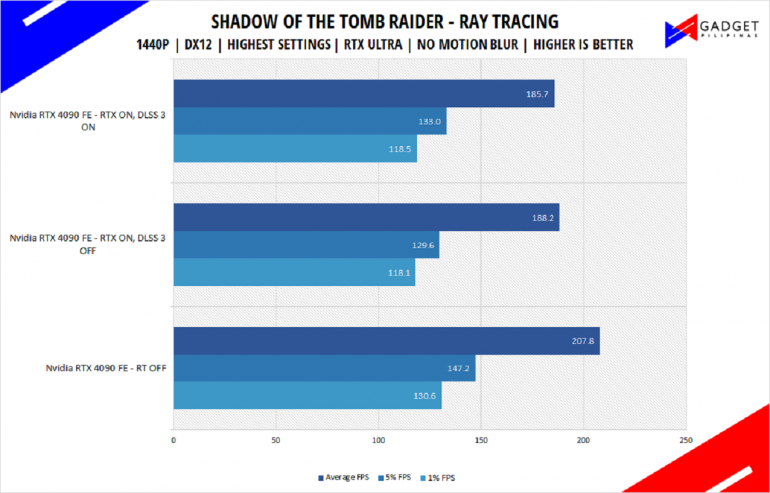
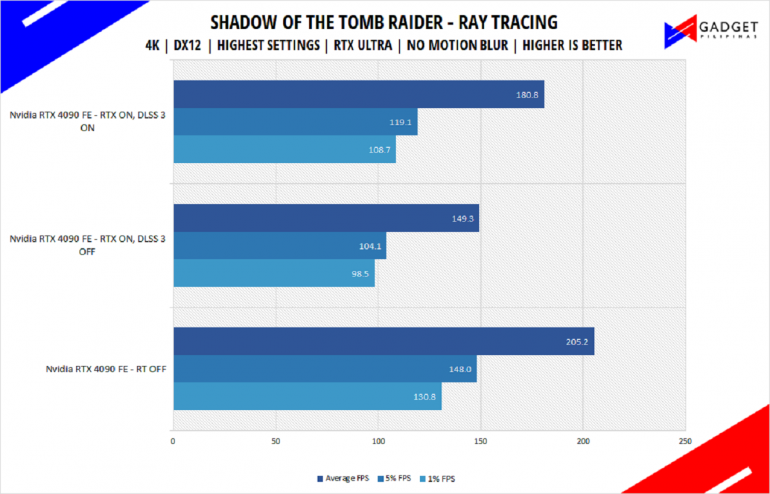
Metro Exodus
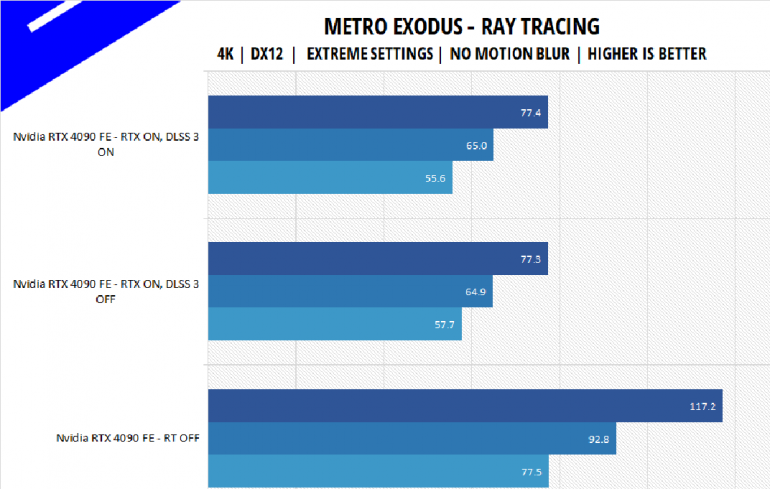
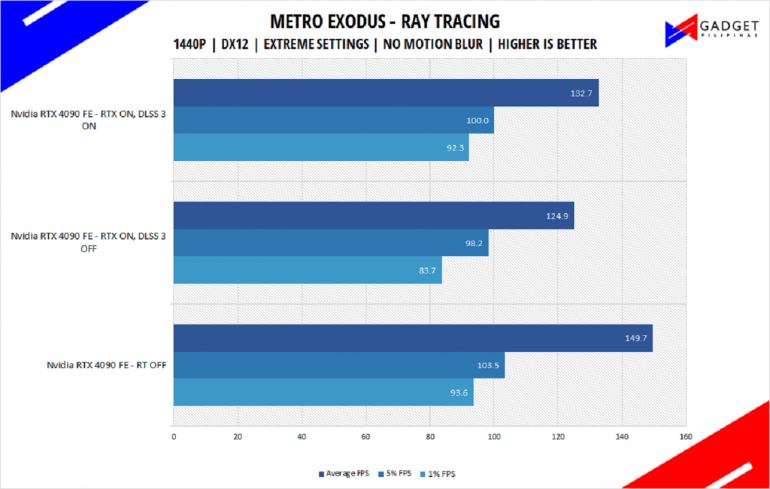
Nvidia RTX 4090 Founders Edition Temperatures and Power Daw
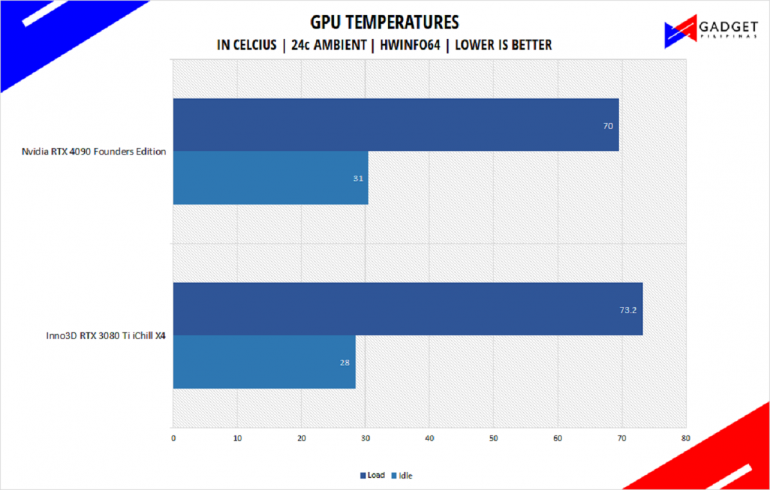
Seeing the max temperature of the RTX 4090 Founders Edition at 70°C, the 3.5 slot flowthrough cooler now looks overkill considering the performance it offers. There’s definitely more room for overclocking thanks to the wide thermal headroom not to mention the higher fan speeds possible for the cooler. That said, the Founders Edition card is a very tough card to beat not just in performance but in temperature as well as we’ve seen board partners with larger-sized coolers for the RTX 4090 but their thermals and performance have yet to compare with the RTX 4090 FE.
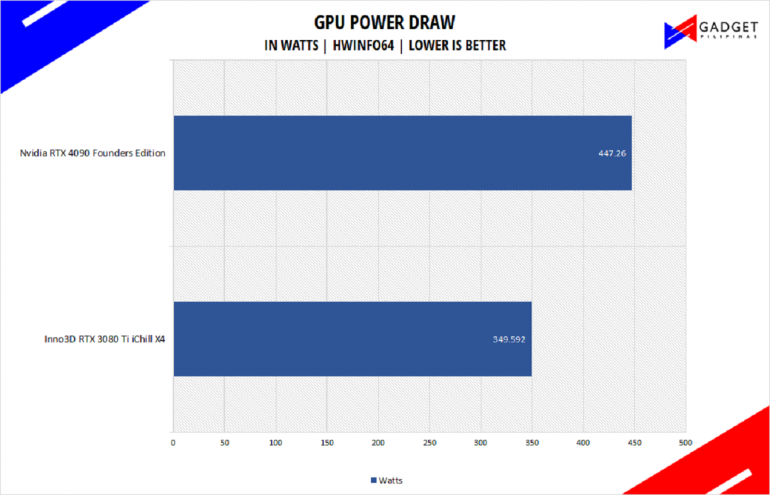
Power consumption-wise, our RTX 4090 FE peaked at 447.26 watts compared to our RTX 3080 Ti at 349.592W. 100W more for more than twice the performance improvement is a trade I’ll take any day, especially considering that we could definitely overclock the RTX 4090 FE and get more performance thanks to the new 12+4pin or 16pin ATX 3.0 connector.
Performance Summary and Conclusion
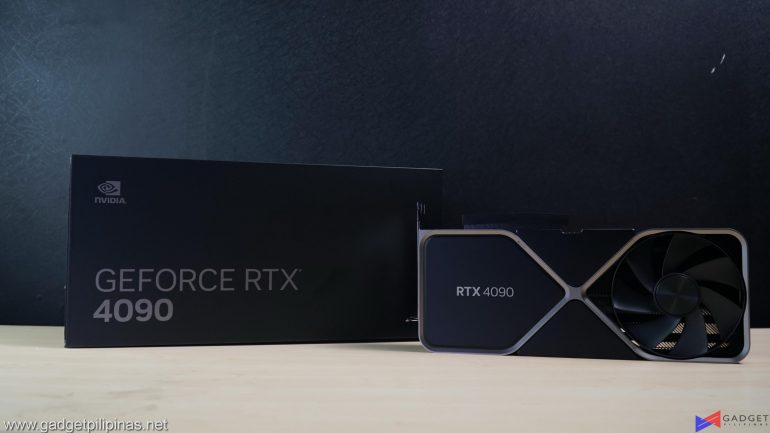
Nvidia has simply outdone themselves with the release of its RTX 40 series graphics cards. The features namely DLSS 3.0 and other architectural improvements brought upon by the Ada Lovelace architectures unlock the capabilities of the GPUs for more than just gaming. Of course, all of these new add-ons and improvements are geared towards improving your gaming experience and not just brute forcing higher FPS numbers which its competitors are still catching up to. But in terms of features, Nvidia is simply unparalleled with the RTX 40 series. That said, part of the higher pricing goes to the R&D of these graphics cards to bring in new features such as dual AV1 encoding and decoding, SER, DLSS 3.0, etc. GPU price crisis aside, the $100 premium over the launch price of the RTX 3090 and $400 cheaper than the launch price of the RTX 3090 Ti is well more than worth it considering the aforementioned performance and features that you’re getting. Not to mention the $100 premium can also be attributed to inflation and the thicker chunk of metal for the cooling.
The RTX 4090 is in a class of its own delivering top-tier performance and features that no other brand or GPU could offer. It simply is the most powerful graphics card to date and is likely to stay that way until either Nvidia releases a RTX 4090 Ti or gets replaced by the RTX 5000 series. The Founders Edition model has evolved from a novelty collectors card to a flagship cooler that most brands are keeping up with as seen on the RTX 30 series FE model and is now more prominent on the RTX 4090 Founders Edition. That said, the RTX 4090 is definitely not for everyone as it’s still on the premium side and Nvidia’s RTX 3090 and RTX 3090 Ti hold a bargain with their slashed prices. So, if you’re thinking about whether you should get the RTX 4090 or go for a lower-tier card then the answer is pretty systematic. Get the RTX 4090 if you want the maximum performance and framerate possible for your apps or games or if you plan to utilize its features, particularly AV1. If you’re not going to pair the RTX 4090 with either a flagship Core i9 or Ryzen 9 then the RTX 4080 16GB launching in September might be the more practical choice.

Grant is a Financial Management graduate from UST. His passion for gadgets and tech crossed him over in the industry where he could apply his knowledge as an enthusiast and in-depth analytic skills as a Finance Major. His passion allows him to earn at the same time help Gadget Pilipinas' readers in making smart, value-based decisions and purchases with his reviews and guides.

